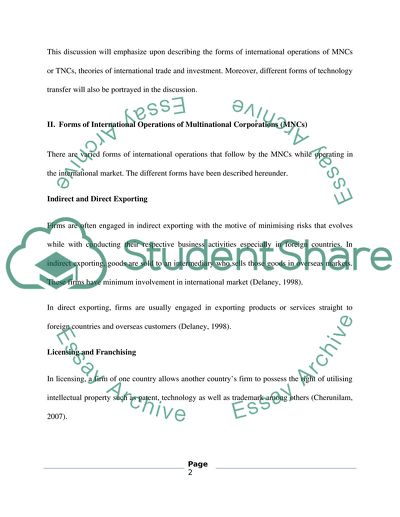Cite this document
(“Transfer of Technology and R&D to Developing Countries Essay”, n.d.)
Transfer of Technology and R&D to Developing Countries Essay. Retrieved from https://studentshare.org/technology/1611115-in-recent-decades-tncs-have-played-a-significant-role-in-transfer-of-technology-and-rd-activities-to-developing-countries-examine-the-reasons-for-this-trend-and-its-role-in-world-development
Transfer of Technology and R&D to Developing Countries Essay. Retrieved from https://studentshare.org/technology/1611115-in-recent-decades-tncs-have-played-a-significant-role-in-transfer-of-technology-and-rd-activities-to-developing-countries-examine-the-reasons-for-this-trend-and-its-role-in-world-development
(Transfer of Technology and R&D to Developing Countries Essay)
Transfer of Technology and R&D to Developing Countries Essay. https://studentshare.org/technology/1611115-in-recent-decades-tncs-have-played-a-significant-role-in-transfer-of-technology-and-rd-activities-to-developing-countries-examine-the-reasons-for-this-trend-and-its-role-in-world-development.
Transfer of Technology and R&D to Developing Countries Essay. https://studentshare.org/technology/1611115-in-recent-decades-tncs-have-played-a-significant-role-in-transfer-of-technology-and-rd-activities-to-developing-countries-examine-the-reasons-for-this-trend-and-its-role-in-world-development.
“Transfer of Technology and R&D to Developing Countries Essay”, n.d. https://studentshare.org/technology/1611115-in-recent-decades-tncs-have-played-a-significant-role-in-transfer-of-technology-and-rd-activities-to-developing-countries-examine-the-reasons-for-this-trend-and-its-role-in-world-development.


